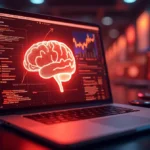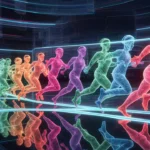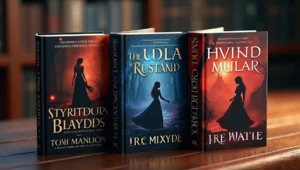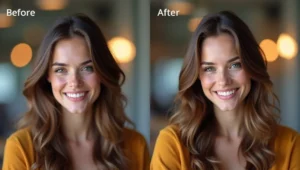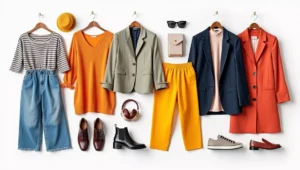Your Characters Are Waiting to Come Alive
Imagine this: You’re sitting at your desk, staring at a blank page. You can feel your character in your mind—their personality, their story, the way they walk—but you just can’t see their face. What do they look like? What are they wearing? How do their eyes reflect their past?
- Your Characters Are Waiting to Come Alive
- Why AI Character Design Tools Are Game-Changers
- Understanding AI Character Design: How Does It Work?
- 💖 You Might Also Like
- The Best AI Tools for Character Design
- 1. Midjourney: The Artist’s Favorite
- 2. DALL-E 3: The User-Friendly Option
- ✨ More Stories for You
- 3. Stable Diffusion: The Customizable Powerhouse
- 4. Leonardo AI: The Game Developer’s Dream
- 🌟 Don’t Miss These Posts
- 5. Artbreeder: The Character Evolution Tool
- 6. Character.ai: The Personality-First Approach
- How to Write Amazing Prompts (Even If You’re New)
- The Basic Formula
- Examples from Weak to Strong
- Magic Words That Improve Your Results
- Style Keywords to Try
- Common Mistakes to Avoid
- Tips for Different Creative Projects
- For Game Developers
- For Writers and Authors
- For Comic Creators and Visual Storytellers
- For Tabletop RPG and D&D Players
- Making Your AI Characters Feel Alive
- Add Personality Through Details
- Create Character Consistency
- Think Beyond the Image
- Combining AI with Human Creativity
- Start with AI, Finish with Refinement
- When to Hire a Real Artist
- Mixing Techniques
- Legal and Ethical Considerations
- Can You Use AI Characters Commercially?
- Copyright Considerations
- The Ethical Side
- Best Practices
- Troubleshooting Common Problems
- Problem: Character Doesn’t Look Right
- Problem: Inconsistent Results
- Problem: Wrong Art Style
- Problem: Extra Fingers, Weird Anatomy
- Problem: Character Looks Too Generic
- The Future of AI Character Design
- What’s Next?
- Staying Updated
- Getting Started: Your Action Plan
- Week 1: Learning and Exploring
- Week 2: Creating Your Characters
- Month 1 Goal: Complete Character Portfolio
- Real Success Stories
- Indie Game Developer Success
- Author’s Visual Aid
- D&D Game Master’s Toolkit
- Conclusion: Your Creative Journey Begins Now
- Quick Reference: Tool Comparison Chart
- Your Next Steps
For game developers, writers, and creative storytellers, this moment happens all the time. Creating characters is exciting, but designing how they look? That can feel impossible, especially if you’re not an artist.
Here’s the good news: We live in an amazing time where artificial intelligence can help bring your characters to life. These AI tools are like having a talented artist sitting right next to you, ready to draw whatever you imagine.
In this guide, we’ll explore the best AI tools for generating character designs. Whether you’re making a video game, writing a novel, creating a comic book, or just telling stories for fun, these tools will change how you work. And don’t worry—we’ll explain everything in simple words that anyone can understand.
Why AI Character Design Tools Are Game-Changers
Let’s be honest: not everyone can draw. And that’s okay! But if you’re creating stories or games, you probably want to see what your characters look like. Maybe you need:
- A hero for your fantasy novel
- A villain for your video game
- A whole cast of characters for your comic
- Different outfits for your characters
- Multiple versions to choose the perfect design
Before AI, you had three choices:
- Learn to draw yourself (this takes years)
- Hire an artist (this costs money—sometimes a lot!)
- Use your imagination (which is great, but hard to share with others)
Now, there’s a fourth option: Use AI to generate character designs in minutes.
These tools are special because they:
- Work super fast (seconds to minutes instead of hours or days)
- Cost less than hiring artists (many have free options)
- Let you try endless ideas without wasting time
- Help you communicate your vision to others
- Give you a starting point even if you plan to hire an artist later
Think of AI character generators as your creative partner. You bring the ideas, and the AI brings them to life visually.
Understanding AI Character Design: How Does It Work?
Before we dive into the best tools, let’s understand how this magic happens. Don’t worry—we’ll keep it super simple.
AI character generators use something called “machine learning.” Basically, these tools have looked at millions and millions of pictures. They’ve studied art from all over the world—fantasy art, realistic portraits, anime, cartoons, and everything in between.
💖 You Might Also Like
When you type a description like “a brave knight with red armor and a kind smile,” the AI remembers all the knights, red armor, and smiling faces it has seen. Then it combines these memories to create something new—your unique character.
It’s kind of like if you asked a friend who had read every book and seen every movie to draw something. They’d mix together everything they know to create your vision.
Here’s what you need to do:
- Write a description (called a “prompt”) of your character
- Choose some settings (like the art style you want)
- Wait a few seconds
- Get your character design
The better your description, the better your results. But don’t worry—we’ll teach you how to write great prompts later in this guide.
The Best AI Tools for Character Design
Now, let’s explore the best AI tools available today. Each one has special strengths, so we’ll help you understand which is right for your project.
1. Midjourney: The Artist’s Favorite
What makes it special: Midjourney creates incredibly beautiful, artistic character designs. Many professional artists use it because the quality is outstanding.
Best for: Game developers and writers who want fantasy characters, sci-fi designs, or artistic styles. Perfect if you care deeply about visual quality.
How it works: Midjourney works through Discord (a chat app). You type your description, and the AI generates four different versions. You can then ask it to make variations or improve specific ones.
Pricing: Starts around $10 per month for the basic plan. There’s no free option anymore, but the quality is worth it for serious creators.
Example prompt: “A fierce female warrior with silver hair, wearing dark leather armor, scar across left eye, determined expression, fantasy style, detailed character design”
Pros:
- Amazing artistic quality
- Great for detailed, realistic characters
- Huge community sharing tips and techniques
- Regular updates with new features
Cons:
- Costs money (no free version)
- Requires learning Discord if you haven’t used it
- Sometimes generates unexpected results (but that can be fun!)
Perfect for: Game developers creating concept art, writers who want book cover characters, or anyone making fantasy/sci-fi content.
2. DALL-E 3: The User-Friendly Option
What makes it special: DALL-E 3 (made by OpenAI) is incredibly easy to use and understands natural language really well. You can describe your character the same way you’d tell a friend.
Best for: Beginners, writers who want simple character references, and anyone who wants a straightforward tool.
✨ More Stories for You
How it works: You can use DALL-E 3 through ChatGPT, Bing Image Creator, or Microsoft Designer. Just type what you want, and it creates your character.
Pricing: Free version available through Bing Image Creator. Premium version through ChatGPT Plus ($20/month) gives you more requests.
Example prompt: “Create a character design for a young wizard boy, about 12 years old, wearing blue robes with star patterns, messy brown hair, holding a wooden wand, friendly smile, cartoon style”
Pros:
- Super easy for beginners
- Great at understanding what you mean
- Free option available
- Creates consistent characters across different poses
Cons:
- Sometimes creates safer, less edgy designs
- Art style can be a bit generic compared to Midjourney
- Free version has daily limits
Perfect for: Writers creating character references, teachers making educational content, or beginners just starting with AI art.
3. Stable Diffusion: The Customizable Powerhouse
What makes it special: Stable Diffusion is open-source, which means it’s super customizable. You can train it to create specific styles or even design characters that look consistent across multiple images.
Best for: Tech-savvy game developers, artists who want total control, and people creating characters for commercial projects.
How it works: You can use Stable Diffusion online through websites like DreamStudio or install it on your own computer. It offers tons of settings to fine-tune your results.
Pricing: DreamStudio gives you free credits to start, then charges based on usage. Running it on your computer is free but requires a good graphics card.
Example prompt: “character design sheet, male elf ranger, green cloak, bow and arrow, multiple expressions, turnaround view, white background, concept art style”
Pros:
- Highly customizable
- Can create consistent characters
- No content restrictions for your own use
- Free if you run it yourself
Cons:
- Steeper learning curve
- Requires technical knowledge for best results
- Setting it up on your computer can be tricky
Perfect for: Game developers who need character sheets, indie creators making commercial games, or anyone who wants complete creative control.
4. Leonardo AI: The Game Developer’s Dream
What makes it special: Leonardo AI is specifically designed for game assets and character creation. It’s like it was made with game developers in mind.
🌟 Don’t Miss These Posts
Best for: Game developers, especially those making 2D games, mobile games, or need consistent character assets.
How it works: Leonardo has a web interface with tools specifically for game creation. You can generate characters, then create variations, turnarounds, and even remove backgrounds.
Pricing: Free tier available with daily tokens. Paid plans start around $10/month for more generation credits.
Example prompt: “2D game character sprite, brave knight, blue armor with gold trim, standing pose, white background, mobile game style, clean lines”
Pros:
- Made specifically for game creation
- Easy to create consistent characters
- Tools for removing backgrounds and editing
- Great for 2D game sprites
Cons:
- Less variety in artistic styles compared to Midjourney
- Free tier is limited
- Better for 2D than 3D character concepts
Perfect for: Indie game developers, mobile game creators, or anyone building 2D games and apps.
5. Artbreeder: The Character Evolution Tool
What makes it special: Artbreeder uses a different approach—you mix and blend existing characters to create new ones. It’s like breeding characters together!
Best for: Writers exploring character ideas, creating families of characters who look related, or people who prefer visual exploration over text descriptions.
How it works: You choose base characters and use sliders to adjust features like age, gender, skin tone, and more. You can “breed” two characters together to create someone new.
Pricing: Free version available with limitations. Pro version is around $8/month.
Example use: Start with a female warrior character, adjust her features to make her older, change her hair color to red, blend her with another character to create her daughter.
Pros:
- Very intuitive and visual
- Great for creating related characters (families, species variations)
- Easy for non-technical users
- Free version is actually useful
Cons:
- Less control over exact details
- Better for faces than full-body characters
- More limited style options
Perfect for: Writers creating character families, game developers designing multiple NPCs, or visual thinkers who prefer exploring rather than describing.
6. Character.ai: The Personality-First Approach
What makes it special: While primarily a chatbot platform, Character.ai now includes image generation. The unique part? You define the character’s personality first, then generate images that match.
Best for: Writers who develop personality before appearance, role-playing game creators, or interactive storytellers.
How it works: You create a character with personality traits, backstory, and speaking style. Then you can generate images that match this personality.
Pricing: Free with some limitations. Plus subscription available for more features.
Example use: Create a character who is “shy, intelligent, loves books, speaks softly” then generate images showing how they might look.
Pros:
- Personality-driven approach
- Great for writers
- Free option available
- Combines character design with character development
Cons:
- Image generation is newer and less developed
- Not as high quality as specialized image tools
- Better as a starting point than final design
Perfect for: Writers developing characters for novels, game developers creating NPCs with personality, or storytellers wanting consistency between character and appearance.
How to Write Amazing Prompts (Even If You’re New)
The secret to getting great character designs from AI is writing good prompts. But what makes a prompt “good”? Let’s break it down super simply.
The Basic Formula
A great character prompt has these parts:
- The Character Type (what they are)
- Physical Features (what they look like)
- Clothing/Equipment (what they’re wearing)
- Expression/Pose (what they’re doing)
- Art Style (how it should look)
Examples from Weak to Strong
Weak prompt: “a warrior”
- Too vague! You’ll get random results.
Better prompt: “a female warrior with red hair and armor”
- Decent, but still missing details.
Strong prompt: “a female warrior, red hair in a braid, wearing silver plate armor with blue accents, holding a longsword, confident expression, fantasy art style, detailed character design”
- Much better! Specific and clear.
Professional prompt: “character design sheet, female warrior, age 30, red hair in a long braid over shoulder, silver plate armor with blue gem details, tall and athletic build, longsword with ornate handle, confident expression, battle-worn appearance, fantasy medieval setting, detailed concept art style, multiple angles”
- Excellent! Very specific with all necessary details.
Magic Words That Improve Your Results
Add these words to make your characters look more professional:
- “character design” or “concept art” – makes it look more polished
- “detailed” – adds more features and texture
- “high quality” – generally improves the output
- “turnaround” or “multiple angles” – shows character from different sides
- “white background” – makes it easier to use in projects
Style Keywords to Try
Want a specific look? Add these:
- For games: “2D game art,” “pixel art,” “mobile game style”
- For fantasy: “fantasy art,” “D&D style,” “medieval fantasy”
- For anime: “anime style,” “manga character,” “Studio Ghibli style”
- For realistic: “photorealistic,” “realistic portrait,” “lifelike”
- For cartoons: “cartoon style,” “Disney style,” “animated character”
Common Mistakes to Avoid
- Being too vague – “a cool character” doesn’t give enough information
- Too many ideas at once – focus on one character per prompt
- Contradicting yourself – don’t say “young child” and “battle-hardened veteran”
- Forgetting the style – always mention the art style you want
- Making it too complex – start simple, add details if needed
Tips for Different Creative Projects
Different projects need different approaches. Let’s look at what works best for various types of creators.
For Game Developers
If you’re making a video game, you probably need:
- Consistent character designs
- Multiple angles and poses
- Characters that fit your game’s art style
- Background characters and NPCs
Best approach:
- Start by generating your main characters with detailed prompts
- Use the same prompt structure for consistency
- Save your favorite AI-generated images as references
- Generate character sheets showing multiple views
- Use these as concept art for your team or for your own work
Pro tip: Create a “style guide” by generating several characters with similar prompts. This helps keep your game’s look consistent.
For Writers and Authors
If you’re writing a book or story, you might want:
- Visual references for your characters
- Character portraits for covers or marketing
- Images to help you remember details
- Visuals to share with readers
Best approach:
- Write detailed character descriptions first
- Turn these descriptions into prompts
- Generate multiple versions to find what “feels right”
- Keep a folder of character images for reference
- Use these when discussing cover art with designers
Pro tip: Generate your characters at different ages or in different outfits to explore their journey through your story.
For Comic Creators and Visual Storytellers
If you’re making comics or graphic novels, you need:
- Consistent characters across panels
- Different expressions and poses
- Various outfits for different scenes
- Supporting cast designs
Best approach:
- Generate a main reference image for each character
- Use tools like Stable Diffusion for consistency
- Create expression sheets (happy, sad, angry, surprised)
- Generate outfit variations
- Use AI images as templates or references for your drawings
Pro tip: Generate character turnarounds (front, side, back views) to maintain consistency when drawing.
For Tabletop RPG and D&D Players
If you’re playing role-playing games, you want:
- Custom character portraits
- Visuals for your campaign
- NPC designs
- Monster and creature designs
Best approach:
- Describe your character as you imagine them
- Focus on fantasy art styles
- Generate tokens or portraits for virtual tabletops
- Create images for important NPCs and villains
- Share with your gaming group
Pro tip: Many online tabletop platforms let you use custom character tokens. AI-generated portraits are perfect for this!
Making Your AI Characters Feel Alive
Getting a picture is just the start. Here’s how to make your AI-generated characters feel like real, living beings:
Add Personality Through Details
Small details bring characters to life:
- Scars and marks tell stories of past adventures
- Unique accessories (a special necklace, worn hat) add personality
- Asymmetry (one earring, hair covering one eye) makes them interesting
- Worn items (patched clothes, scratched armor) show history
- Cultural elements (tattoos, jewelry, hairstyles) add depth
Create Character Consistency
If you’re using characters in multiple scenes:
- Save your prompts – use the same description each time
- Note key features – specific details that make them recognizable
- Use reference images – show the AI your previous generations
- Stick to one tool – different AIs have different styles
- Create a character sheet – one image showing multiple angles
Think Beyond the Image
The best characters exist beyond their appearance:
- Write their backstory – why do they look this way?
- Define their personality – how does their appearance reflect who they are?
- Give them a voice – how do they talk and act?
- Create relationships – who do they know? Who do they love or hate?
- Plan their growth – how might they change throughout your story?
Combining AI with Human Creativity
AI is an amazing tool, but it’s most powerful when combined with human creativity. Here’s how to get the best of both worlds:
Start with AI, Finish with Refinement
- Generate options – create 10-20 variations of your character
- Choose the best – pick the one that feels right
- Identify changes – what would make it perfect?
- Refine further – generate new versions with specific changes
- Add final touches – edit details manually if needed
When to Hire a Real Artist
AI is fantastic, but sometimes you need a human touch:
- For commercial projects – especially if you’re selling your game or book
- For highly specific needs – when AI can’t get it quite right
- For consistent art – across a large project
- For unique style – that doesn’t exist in AI training data
- For final polish – turning concept art into final art
Pro tip: Use AI to create concept art, then hire an artist to create the final version. This saves money because the artist knows exactly what you want!
Mixing Techniques
Creative professionals often combine methods:
- Generate with AI, trace and modify by hand
- Use AI for inspiration, draw it yourself
- Create backgrounds with AI, add characters manually
- Generate characters with AI, use them in 3D software
- Mix AI elements with traditional art
Legal and Ethical Considerations
Before you go crazy generating characters, let’s talk about some important stuff:
Can You Use AI Characters Commercially?
The answer is: It depends on the tool and your plan.
- Midjourney: With a paid plan, you own the images for commercial use
- DALL-E 3: Images can be used commercially if you follow their terms
- Stable Diffusion: Generally open for commercial use
- Check the terms: Each tool has different rules
Important: Always read the terms of service for the AI tool you’re using. These rules can change.
Copyright Considerations
Here’s what you should know:
- You can’t copyright AI-generated images in most places (the law is still developing)
- You can copyright your modifications to AI images
- You can copyright your characters (the idea and story), even if the image is AI-generated
- Commercial use requires understanding the specific tool’s license
The Ethical Side
Some artists are concerned about AI art. Here’s how to be a responsible creator:
- Don’t claim AI art as your own drawing – be honest about using AI
- Support human artists too – commission art when you can
- Use AI as a tool, not a replacement – for your own creativity
- Respect copyright – don’t try to recreate specific artists’ styles without permission
- Give credit – mention which AI tool you used
Best Practices
To stay on the right side of things:
- Use AI for concepts and ideas, not final commercial art (unless the terms allow it)
- Modify AI-generated images to make them unique
- If selling products, check the specific tool’s commercial license
- Consider AI as part of your creative process, not the whole process
- Be transparent about using AI in your work
Troubleshooting Common Problems
Even with the best prompts, sometimes things go wrong. Here’s how to fix common issues:
Problem: Character Doesn’t Look Right
Solution:
- Break down what’s wrong specifically
- Adjust your prompt to fix that one thing
- Try generating multiple times (each result is different)
- Use negative prompts to say what you DON’T want
Problem: Inconsistent Results
Solution:
- Save and reuse exact prompts
- Use the same AI tool consistently
- Note seed numbers (if your tool provides them)
- Generate character sheets showing multiple angles at once
Problem: Wrong Art Style
Solution:
- Add more specific style keywords
- Reference specific art movements or artists (for style only)
- Use style examples if your tool allows
- Try different AI tools—each has strengths
Problem: Extra Fingers, Weird Anatomy
Solution:
- This is common with AI—generate multiple images
- Use “detailed anatomy” or “correct proportions” in prompts
- Choose tools known for better anatomy (like Midjourney)
- Use these as references and fix details manually
Problem: Character Looks Too Generic
Solution:
- Add unique, specific details to your prompt
- Include personality traits that affect appearance
- Add cultural or historical elements
- Specify unusual color combinations or features
The Future of AI Character Design
AI technology is evolving incredibly fast. Here’s what’s coming:
What’s Next?
- More consistency – AI will get better at creating the same character in different poses
- Better control – more tools to adjust specific features
- Animation – AI that can animate your characters
- 3D models – generating actual 3D models from descriptions
- Voice and personality – combining appearance with character traits
Staying Updated
AI tools improve constantly. To stay current:
- Follow AI art communities on Reddit and Discord
- Check tool websites for updates
- Watch YouTube tutorials (new techniques emerge weekly)
- Experiment regularly—AI gets better every month
- Join creator communities sharing tips and tricks
Getting Started: Your Action Plan
Ready to start creating characters? Here’s your step-by-step action plan:
Week 1: Learning and Exploring
Day 1-2: Choose one AI tool to start with
- Beginners: Try DALL-E 3 (free through Bing)
- Game devs: Check out Leonardo AI
- Quality seekers: Consider Midjourney
Day 3-4: Practice writing prompts
- Generate 10 different characters
- Experiment with different styles
- Save your favorite results
Day 5-7: Refine your technique
- Review what worked and what didn’t
- Study prompt examples from the community
- Create your first “real” character for a project
Week 2: Creating Your Characters
Day 1-3: Generate your main characters
- Write detailed descriptions
- Create multiple variations
- Choose your favorites
Day 4-5: Build consistency
- Create character sheets
- Generate different expressions
- Test different outfits or equipment
Day 6-7: Expand your cast
- Create supporting characters
- Design NPCs or background characters
- Generate any villains or antagonists
Month 1 Goal: Complete Character Portfolio
By the end of your first month:
- 5-10 main characters fully designed
- Multiple angles and expressions for each
- A consistent art style across all characters
- Confidence in your prompting skills
Real Success Stories
Let’s look at how real creators are using AI:
Indie Game Developer Success
Sarah’s Story: Sarah is making a 2D adventure game alone. She used Leonardo AI to create 20 unique NPCs in one week—something that would have taken months or cost thousands with traditional art.
Her tip: “Start with your main character first. Once you nail that style, use similar prompts for everyone else to keep it consistent.”
Author’s Visual Aid
Marcus’s Story: Marcus writes fantasy novels and used Midjourney to visualize his characters. He shares these images on social media, and his book sales increased by 40% because readers could see the characters.
His tip: “Don’t overthink it. Generate images that capture the feeling of your character, even if small details aren’t perfect.”
D&D Game Master’s Toolkit
Emma’s Story: Emma runs online D&D games and uses AI to create character portraits for players and NPCs. Her players are more engaged because everyone can see the characters they’re interacting with.
Her tip: “Make a folder for each campaign. Save all your character images organized by location or importance.”
Conclusion: Your Creative Journey Begins Now
We’ve covered a lot in this guide! Let’s recap the most important points:
Remember:
- AI is a tool to help your creativity, not replace it
- The best tool depends on your specific needs
- Good prompts are the key to great results
- Consistency comes from practice and patience
- Combine AI with your own creative ideas
Start simple:
- Choose one AI tool
- Create one character today
- Learn from each attempt
- Build your skills gradually
- Have fun with the process!
The magic ingredient: Your imagination. AI can generate images, but only you can create characters with real depth, personality, and purpose. The pictures are just the beginning—the stories you tell with these characters are what truly matter.
Whether you’re developing the next hit indie game, writing an epic fantasy novel, creating a webcomic, or just exploring your creativity, AI character design tools are here to help. They’re your creative partners, ready to bring your visions to life.
So what are you waiting for? Your characters are waiting to be discovered. Go create something amazing!
Quick Reference: Tool Comparison Chart
Best for Beginners: DALL-E 3 (via Bing Image Creator)
- Easy to use
- Free option available
- Great results without technical knowledge
Best for Quality: Midjourney
- Highest quality images
- Most artistic results
- Professional-grade output
Best for Game Developers: Leonardo AI
- Made for game assets
- Great for consistency
- Tools specifically for game creation
Best for Customization: Stable Diffusion
- Most control over results
- Open-source flexibility
- Can run locally
Best for Exploration: Artbreeder
- Visual, intuitive interface
- Great for discovering ideas
- Easy character variations
Best for Writers: Character.ai + DALL-E 3
- Personality-first approach
- Simple and accessible
- Good for character development
Your Next Steps
- Pick one tool from this guide
- Create your first character today
- Share it with friends or community
- Practice and experiment
- Have fun creating!
Remember: Every expert was once a beginner. Your journey starts with a single character. What will you create first?
Happy creating! May your characters be amazing, your stories be epic, and your creative journey be filled with joy!
